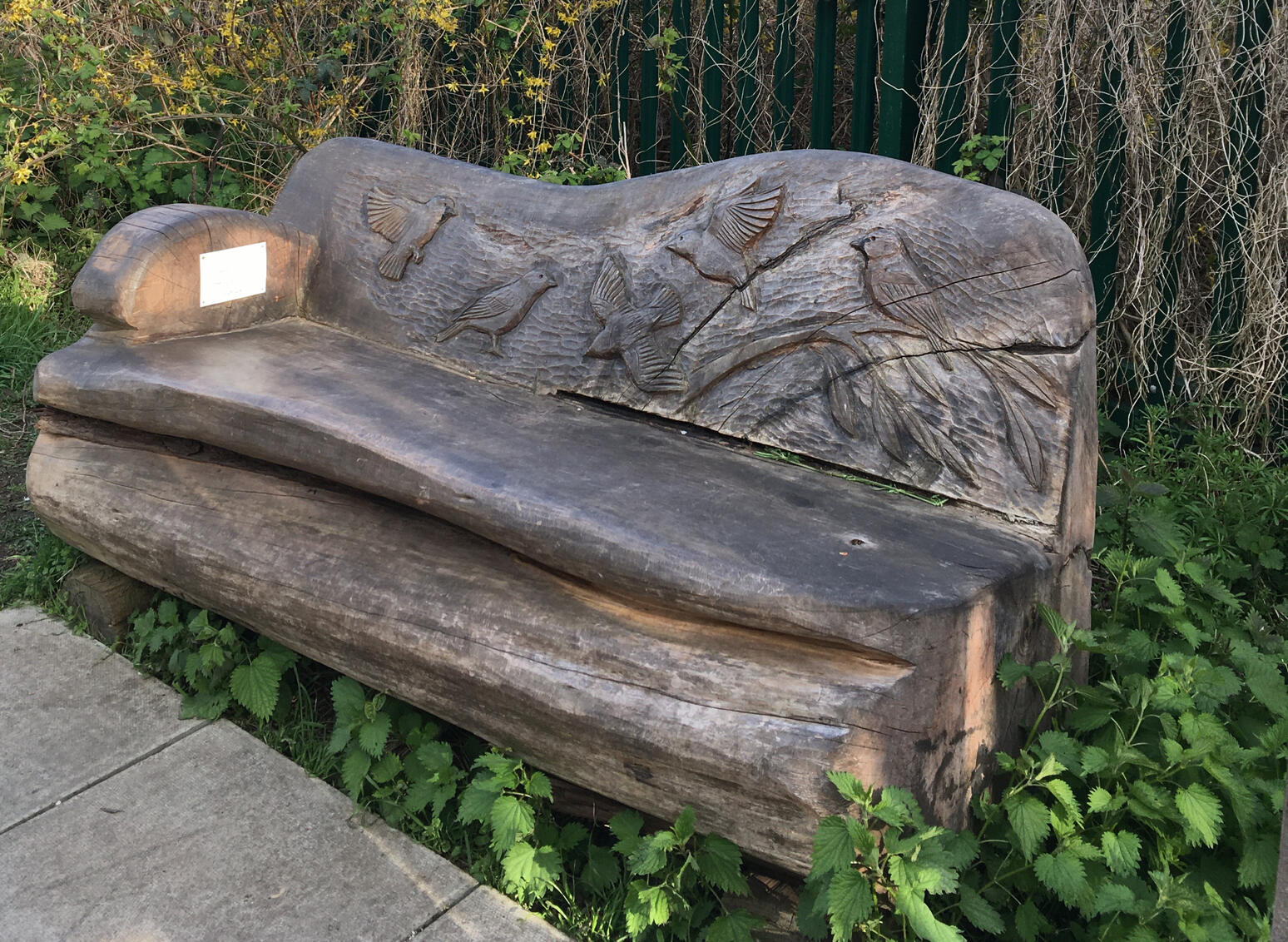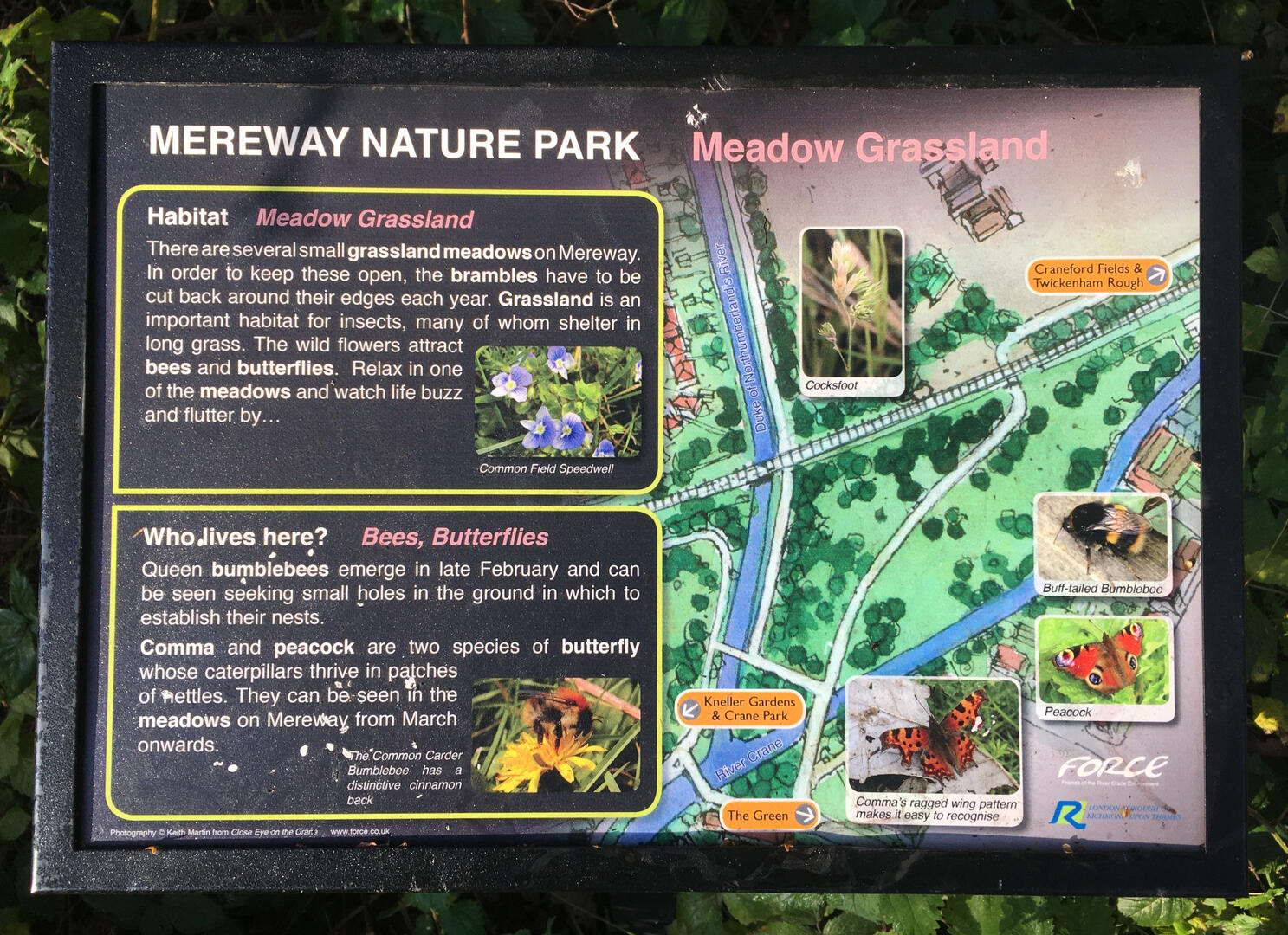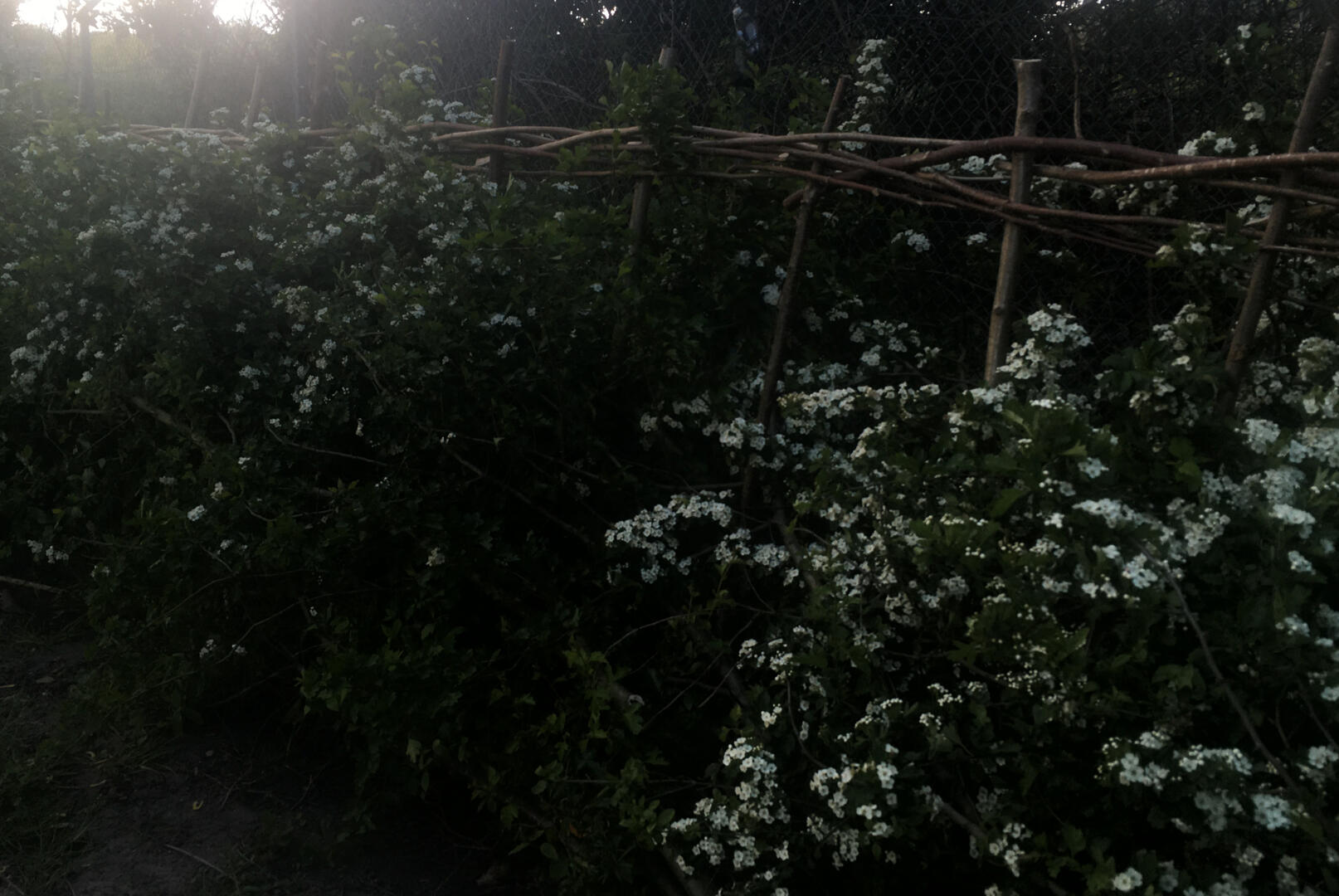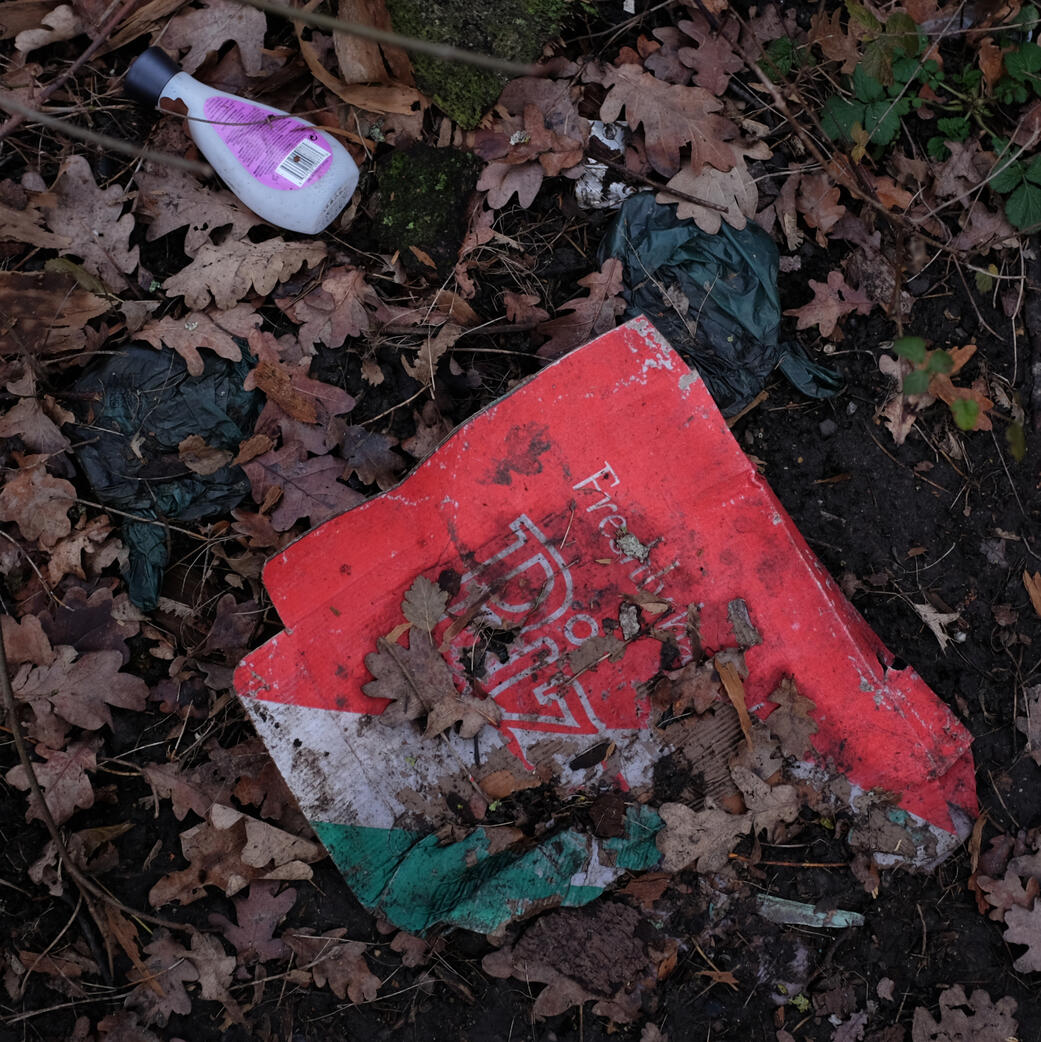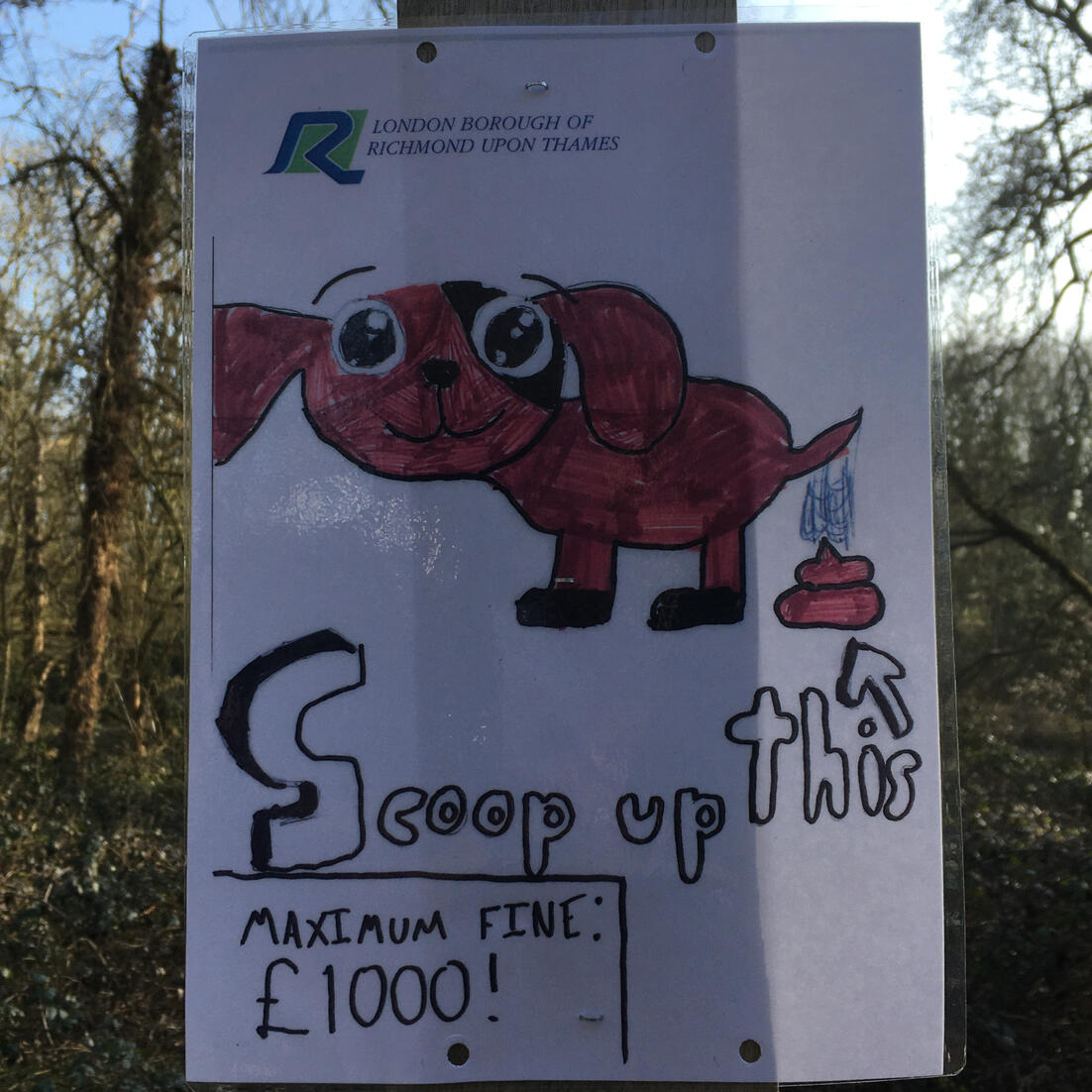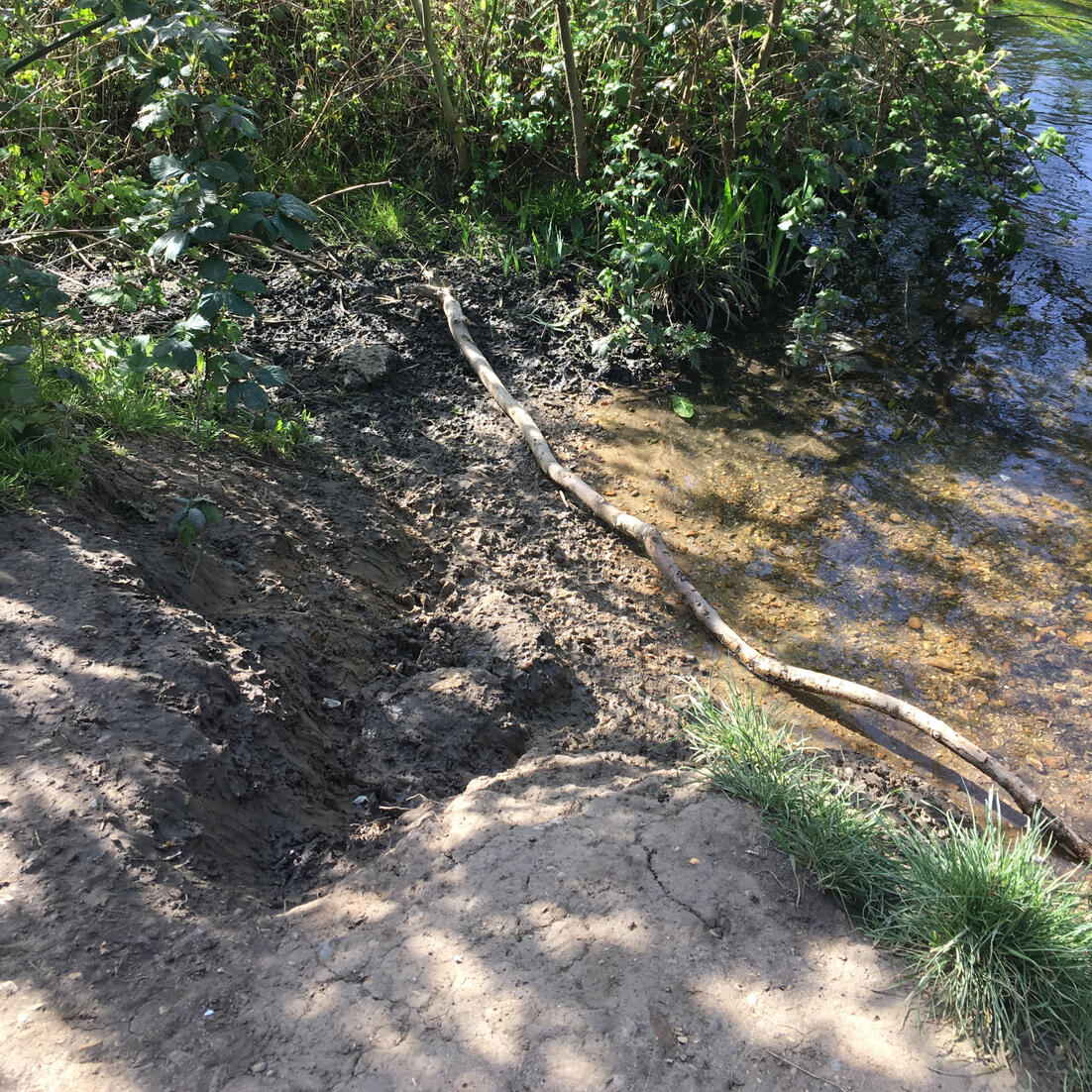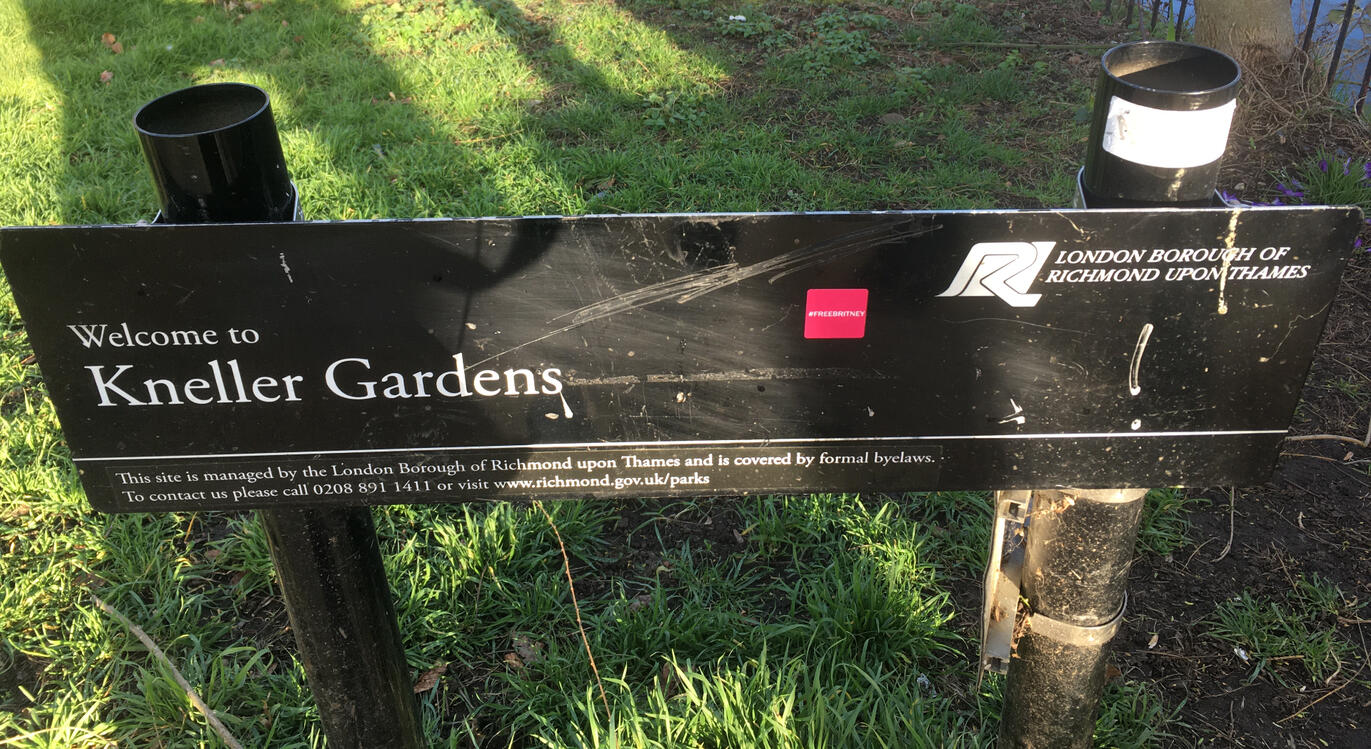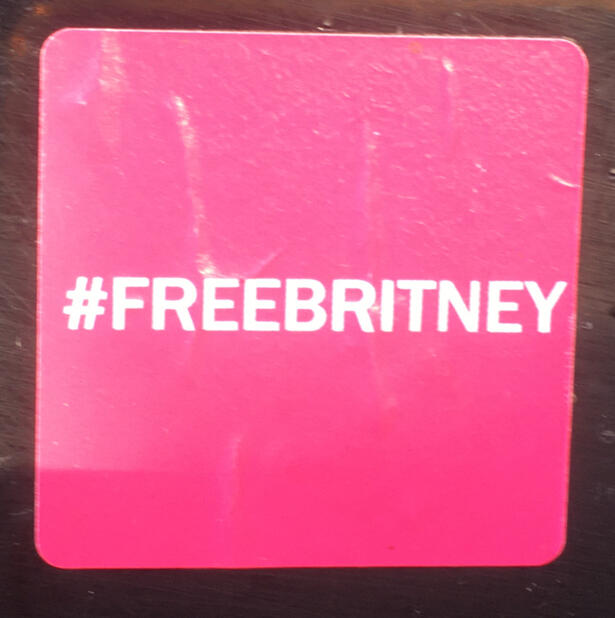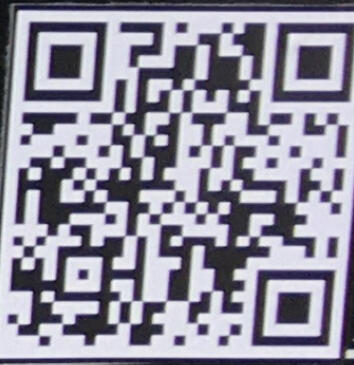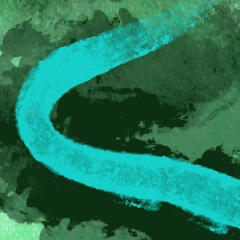
river crane project
An anthropological research project about the River Crane and its environments
about the project
Click below or scroll down to my curatorial statement and methods
What is 'neighbourhood'?
A place, a social formation? an idea?
a sense of place
Creating neighbourhood physically, socially
gathered by river
People connect through the River Crane and its green spaces
social ecosystems
Social connections flow through neighbourhood and beyond
digital river, digital neighbourhoods
The River Crane flows digitally: information, connections, ideas
doing digital anthropology
Reflections on what the process has revealed to me
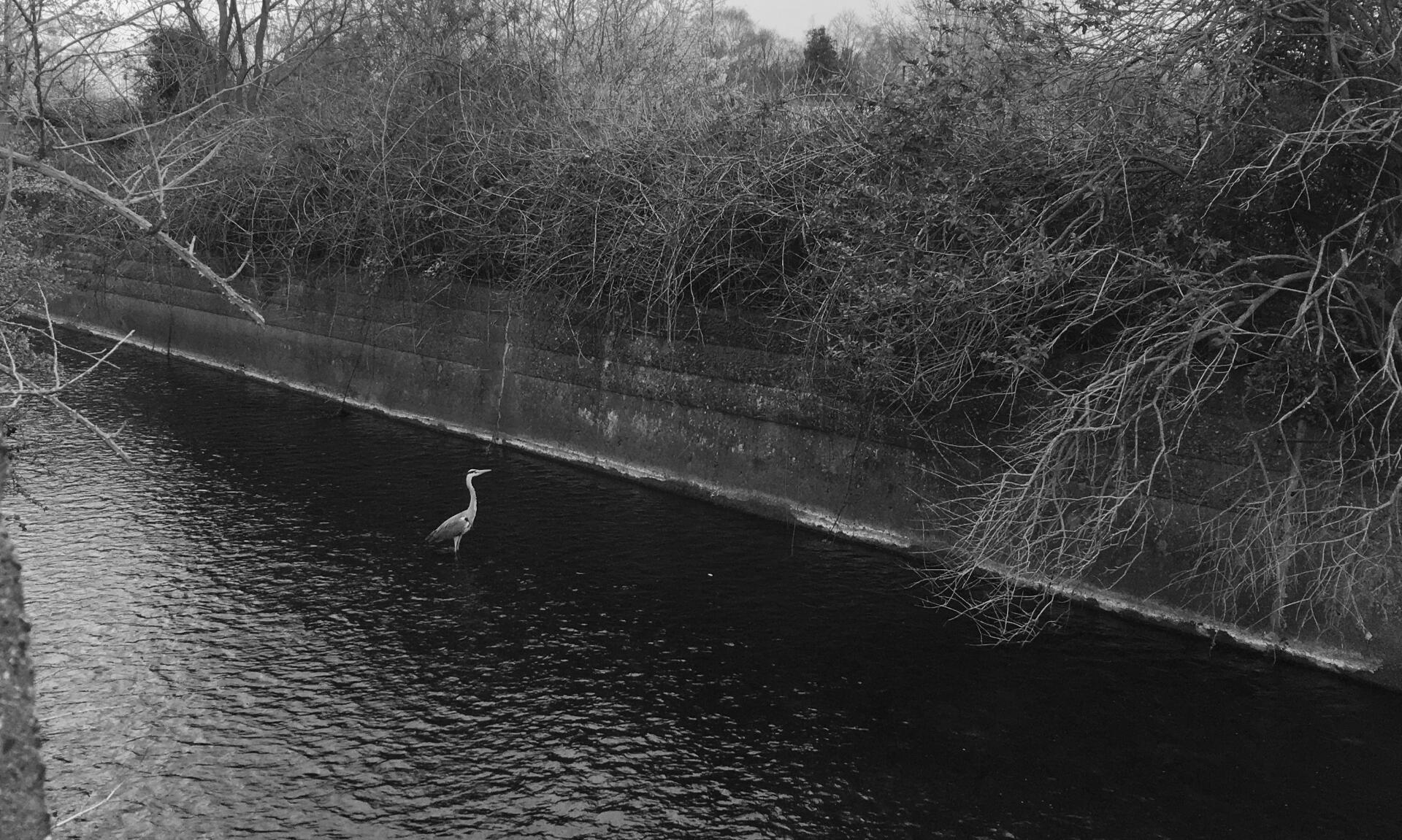
about this project
This is a research project undertaken for the Digital Anthropology MSc course at University College London (UCL).We were given the theme of “neighbourhoods” and told not to conduct any face-to-face research. This constraint has drawn attention to the methodological complexity of conducting ethnographic research remotely. I have both used digital technologies as tools in my research, and also analysed how people are using them in everyday life.Prompted by the theme of “neighbourhoods”, I decided to focus on my own local area. I live within the catchment of the River Crane, a tributary of the Thames. The green space bordering the Crane forms an important ecological corridor for wildlife.My research question: Is the River Crane making neighbourhood(s)?I was interested to find out whether the River Crane activates social connections, online and offline, and whether these could be considered neighbourhoods. How does the River impact the ways people feel about their area and the people in it?My key findings are that the River Crane ‘corridor’ (the waterway and the bordering green spaces) gathers people formally and informally around a variety of focal points and causes. These groupings interact offline and online, extending far beyond a neighbourhood level, forming an ecosystem of relations. ‘Neighbourhoods’ were understood to be something physical, a ‘local area’, but also something social and intangible.This website is the output of my research. As a public-facing resource, it is designed to showcase my research process and findings in more accessible form than a traditional dissertation. It is focused on displaying my field notes with brief analysis rather than in-depth engagement with academic discourses and literature.The core content of this website is on one single page, inviting you to scroll, but you can also navigate between sections using the topic buttons at the head of the site.
People and MethodsThe Friends of the River Crane Environment (FORCE) are an ecological conservation group in my neighbourhood. I had been aware of them for a couple of years because their logo is visible in the physical environment: on bench plaques and information boards near the river, for instance. I thought that FORCE would be a good place to start my investigations of how the river creates communities or even neighbourhoods.After speaking with the then-chair of FORCE (Rob) in late 2020, the trustees, FORCE’s online sites, and the work that they do all became key features in my research. I used Zoom, emails and phone calls to conduct research with FORCE trustees in both group and individual semi-structured and informal interviews.Offline, I explored a particular stretch of the river as a physical field site and documented this through my mobile phone: taking photos, videos, sound recordings and experimenting with the mapping affordance of exercise apps.Online, I followed the River Crane through social media platforms and websites, conducting content analysis of posts and tracking themes that emerged. I created Facebook and Twitter accounts for this project, providing information for potential participants and allowing me to engage with groups and individuals.I used these social media accounts to publicise two surveys about people’s usage and experience of the River Crane corridor, gathering quantitive and qualitative data. I did not feel that this research was strictly ethnographic, and worried that I might slip into a data abstraction.* Nevertheless, I found both the results and the process itself useful in helping me to understand how people might define "neighbourhoods" in relation to the river.The survey results were fully anonymous, but I have used the first names of FORCE trustees, with the permission of participants.THANK YOU: my gratitude to Rob, Frances, Alan, Alison, Jane, Martin and Gary (FORCE trustees) who generously shared their time, thoughts and experiences with me.
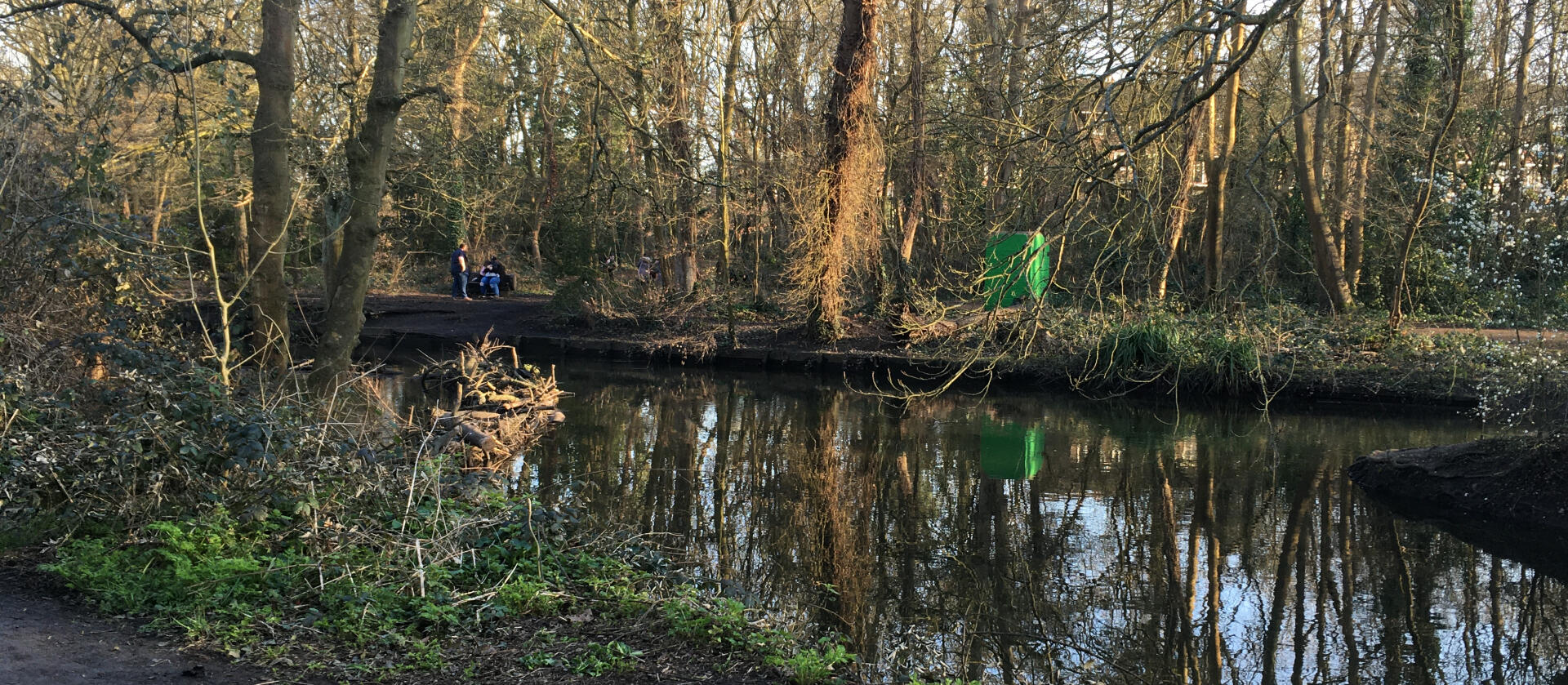
neighbourhood(s)
Defining "neighbourhood"What is a neighbourhood? Can we see it, hear it, feel it? Is it a social formation or a physical space?*Responses to a survey I conducted, asking ‘What does “neighbourhood” mean to you?’ tended to refer to spatial qualities, e.g. "local area", "walkable or bikeable."**The response, "Not a word I ever use," reminded me to seek to understand other people's perspectives rather than impose my own."Neighbourhood" might bring to mind images of streets, buildings and in London, dense urbanisation. This is why I feel the River Crane corridor offers a different way of understanding what a neighbourhood can be and do: it is characterised by green space, parks and, at times, a feeling of not being in a city at all.
* "The public space of the city as a whole remains anonymous in contrast with the neighbourhood in which, little by little, people come to know themselves in relation to others." Tilley, 2019: 16** "The neighbourhood is primarily known through the feet." Tilley, 2019: 16

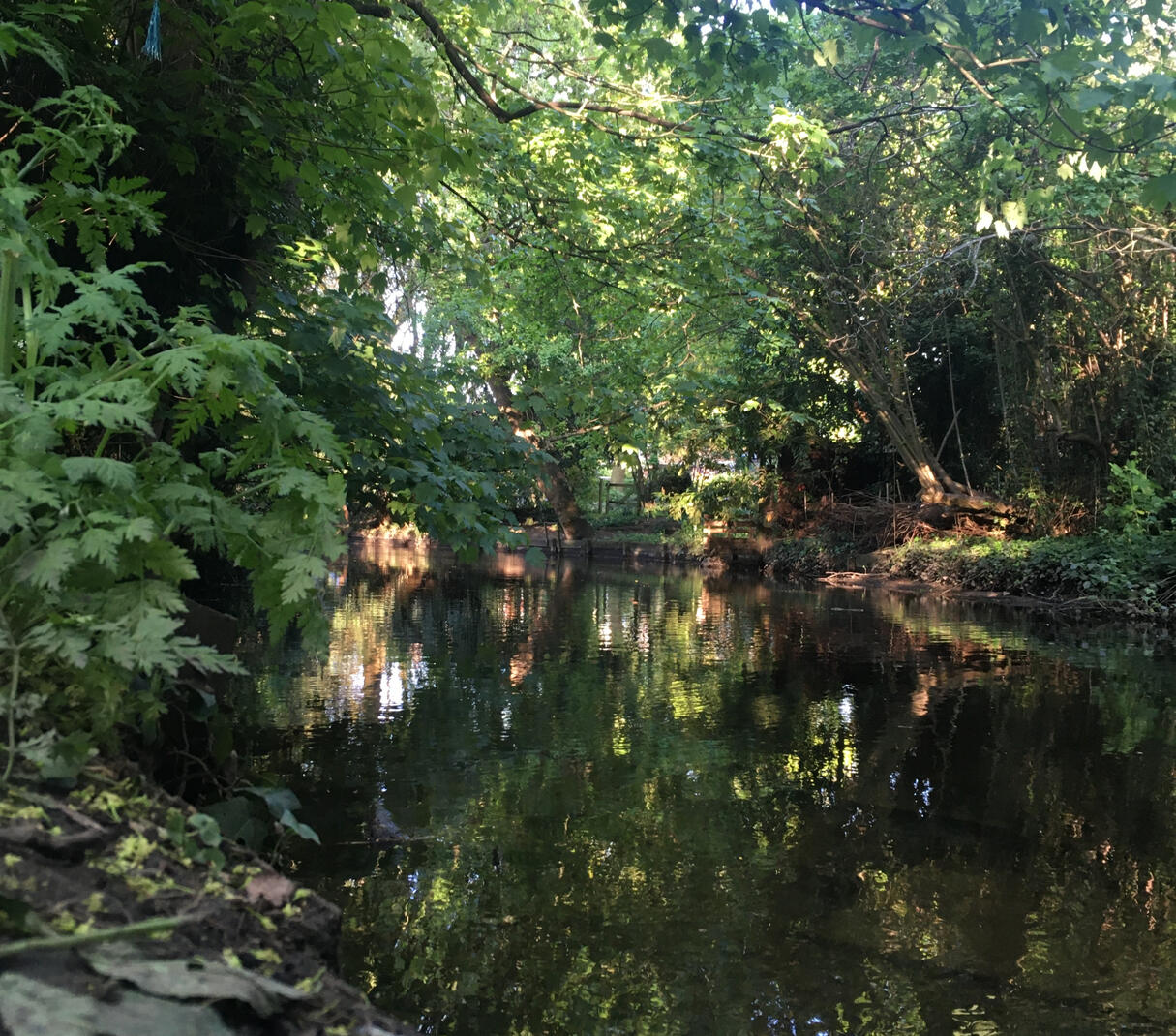

Key finding: The River Corridor is important to people's sense of place
Those who live close to the River Crane corridor and spend time in it indicated that it had a significant impact on their feelings about their neighbourhood.Alison, a FORCE trustee, said that because she was originally from the countryside, the Crane corridor was special because it represented a piece of that in London. She added, "being able to take grandchildren to the park is special, it makes it precious and it mitigates the airport proximity".70% respondents to my survey said that the River Crane corridor was “very important” to their feelings about the neighbourhood they live in, and a further 27% said it was "somewhat important". Many of their comments echoed Alison’s description:
“We are so lucky to have it, and it's great to see the expansion/extension of it over time. I certainly appreciate it, it is very important to the whole feel of the area (as well as environmentally), and this has been furthered during the current situation [the pandemic]”.“It is a thin strip of countryside through the middle of very developed and industrial area.”"I honestly feel that my walks at the crane park are fundamental to my mental well-being."
Because the survey was publicised via my project's social media account and boosted by FORCE on their channels, it is probable that respondents already had an interest in local ecology, which goes some way to explaining the prevalence of such comments above. Nonetheless, I felt that these responses, along with Alison’s comments, help build an impression that the River Crane corridor, at least for some people, is important to feelings about neighbourhood.
Shaping physical and social neighbourhoodsFORCE and the organisations that they work with have an impact on the physical environment as well as the social fabric of the local area. The way that people intervene in space impacts how other people, in turn, experience and intervene.My main physical field site was a stretch of the lower Crane catchment between the Shot Tower and Twickenham Station. In this area, numerous FORCE-provided benches act as characterful landmarks. The fox bench was a particularly popular spot throughout my research period.
Above Left: information board with a pedagogical function, note the FORCE and Richmond Council logos bottom right. Above right: hedging laid by volunteers in Kneller Gardens, now in bloom.The information boards are numerous in my area of the Crane corridor, and reflect efforts to generate public awareness and engagement with our immediate surroundings. Something I wondered: do digital technologies and social media also have this function of making us stop and look around?Volunteers with several local groups undertake conservation work that shapes the landscape. During my research period, paths were wood-chipped, a pond was re-dug and hedges were laid, to name but a few examples. I saw these processes discussed on social media, and then I went to see them for myself.The conservation groups seek to balance ecological needs with the desire to create a space that the community can enjoy.Of course, it is not only FORCE and other conservation groups who interact with this space and make a mark: litter and graffiti suggest that not everyone feels the same ways about the neighbourhood and its meaning.
Just as the landscape shapes people's experiences, people leave all sorts of traces on the landscape, intentional or otherwise.Dog ownership was something that came up in several conversations with FORCE trustees. The nationwide statistic of 3.2 million pets purchased during lockdown was reflected in my fieldsite as far as I was able to tell, with a visible increase in dogs being walked, dog waste on pavements and paths, and dog waste-filled bags that didn't always make it into a bin (see image above left: discarded bags amidst other rubbish by the river). I have no battle with dog ownership, and neither does FORCE. But the way we look after our pets and our wider environments became a point of interest for me through this project.
On the one hand, FORCE trustees noted that increased dog ownership could pose challenges to ecology within the corridor, both in terms of trying to reintroduce or maintain vulnerable species, and protecting riverbank integrity (the image above right shows a worn river bank).On the other hand, Rob was keen to recognise that dog-walkers are an excellent source of local information: they're like a vanguard, "out rain or shine, venturing first into new spaces and giving feedback."The River Crane brings people into contact, both offline and online, who might hold different views. Community groups must navigate between and balance these interests.
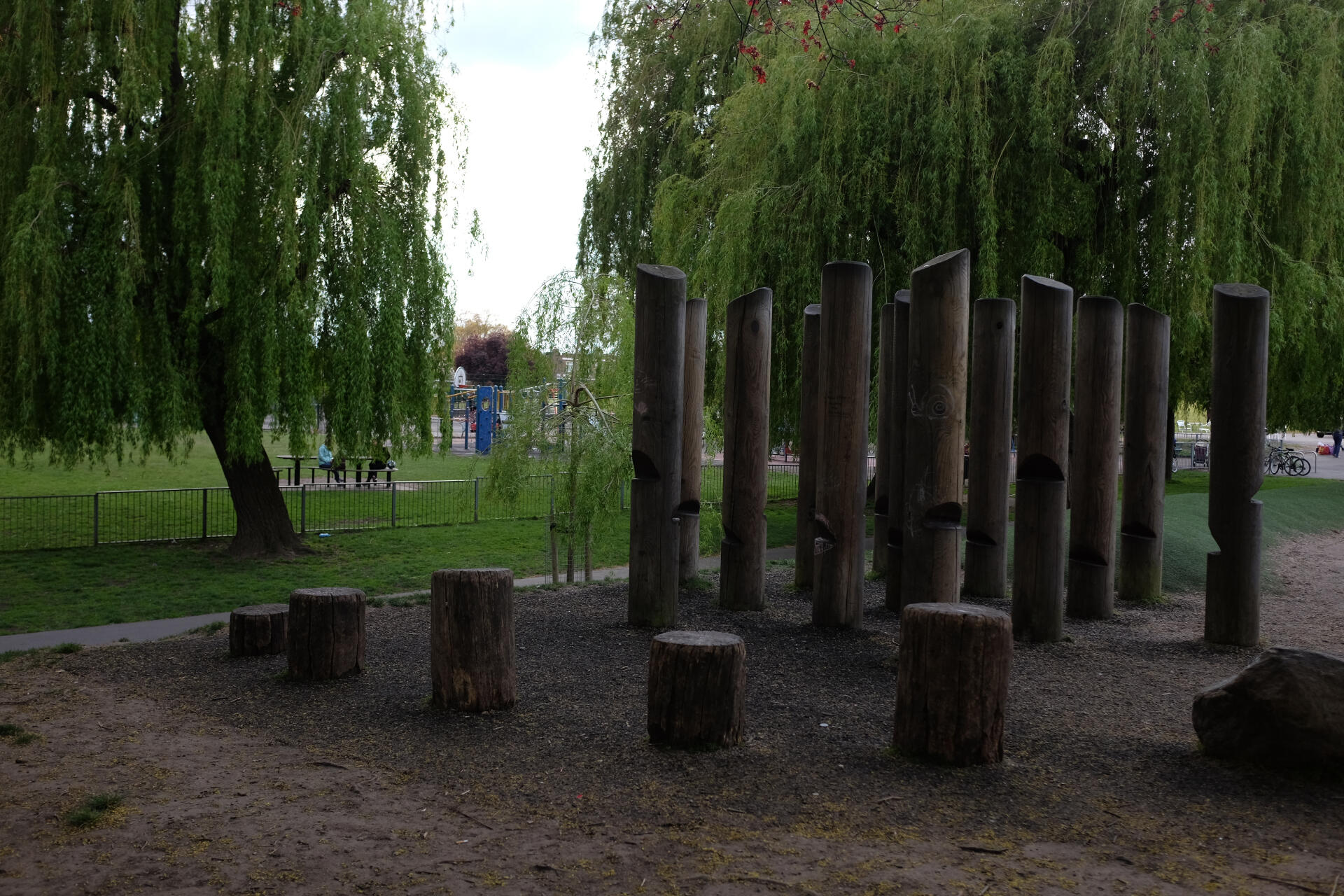
Focal points and co-presenceAbout fifteen minutes walk along the River Crane coming from Twickenham Station, you reach Kneller Gardens.This park has plenty of attractive features: a café, public toilets, children's play areas, exercise machines, the River Crane passing along one side (with waterfowl to watch and feed), basketball and tennis courts. FORCE trustees suggested that the busiest areas of the catchment, such as Kneller gardens, act as a focal point for social activity.One trustee, Jane, said "brief interactions are very important for a sense of community. Where there is less of a focal point, there is less time to build social connections." In this sense, Kneller Gardens stand out as a place where people are likely to encounter others and engage in what the anthropologist Malinowsky calls 'phatic communion'*. Malinowsky coined this concept almost a century ago, in 1923, to refer to the the phrases that we swap to reinforce social bonds but might not carry important information - along the lines of small-talk.During a later conversation, Frances echoed these ideas: "When you’re in a public open space, you feel part of something bigger.” As the FORCE trustees recognised, the encounters with others that take place in a park create a feeling of shared locality and co-presence that help, over time, to build a sense of neighbourhood.
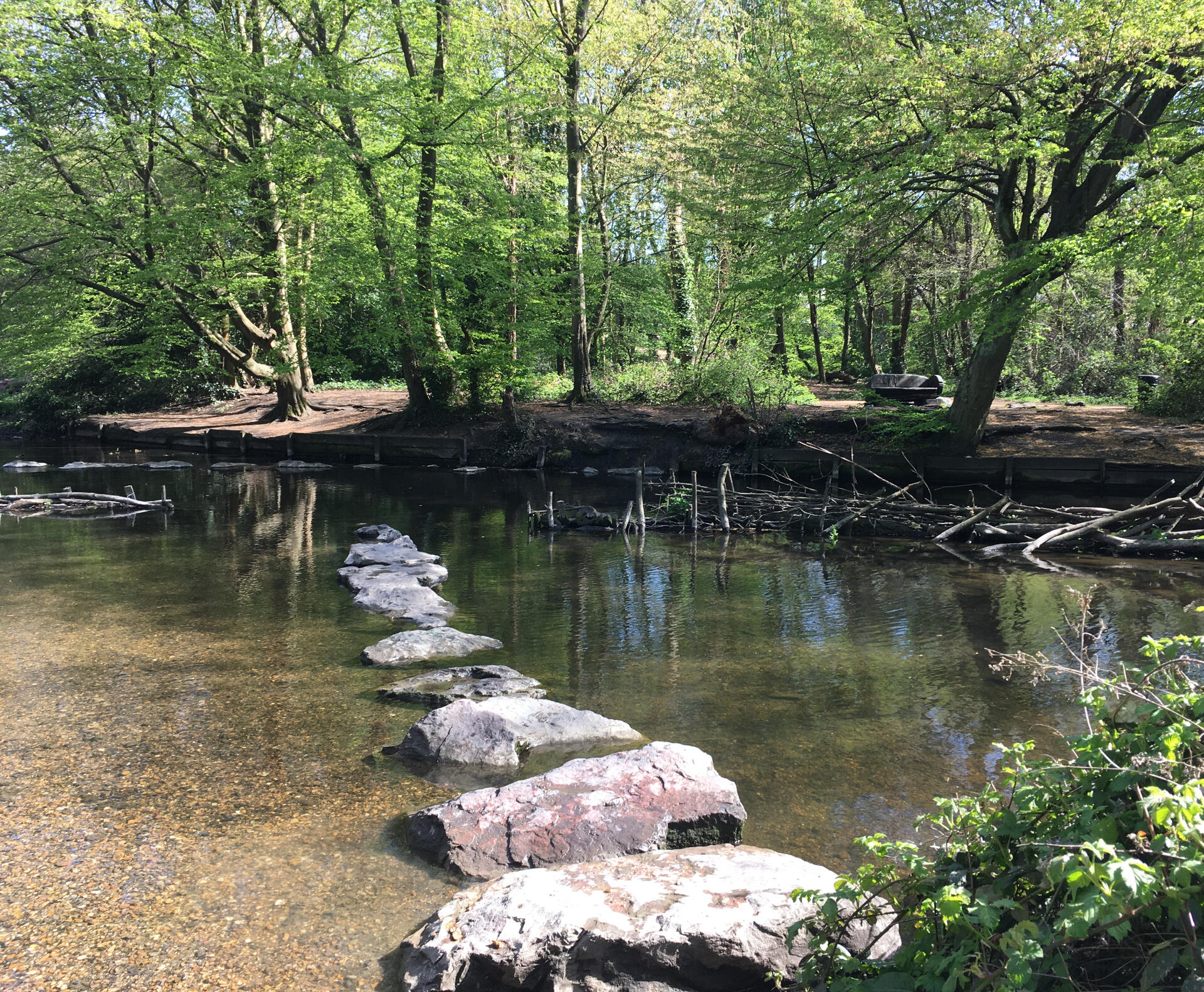
Corridors, green spaces and assetsThe fact that we call the River Crane and its neighbouring green spaces a 'corridor' points to its function as a linking space, for wildlife and humans.This was emphasised to me by Gary, a FORCE trustee who reviewed an earlier draft of this website. He said he thought it was interesting that the concept of the 'neighbourhood' as a bounded space came through clearly, "what comes through less strongly is the importance of the corridor as a linking thing." This was interesting because it made me think about how I was trying to communicate my findings here, and what my findings even were. I do agree entirely with Gary; I think that the river acts as a "linking thing". But whether visitors to this website, or to the River Crane corridor, feel that way is another matter.Since my research, Frances has left her role as a FORCE trustee to focus on her work as a director of Let’s Go Outside and Learn (LGOAL). LGOAL is a Community Interest Company (CIC) whose mission is to facilitate engagement with parks and outdoor spaces among those who face barriers to access.The language that both Frances and Rob used to talk about the River Crane corridor framed it as an “asset". Rob told me that he hoped the coming decade would see a transformation in the River Crane corridor as an asset. Frances said that green spaces in general need to be viewed as a public health asset. For Frances, the link between being outdoors and social, physical wellbeing was fundamental. Frances subsequently shared with me several documents and resources dealing with access to greenspace, social prescribing and nature-based interventions in mental health care.This created a link between the groups working locally and larger-scale, national, societal programmes. Gary told me, "If the Crane were to function more effectively as a route or enabler, it would enhance the concept of the corridor as an "asset", in this case a green-transport asset as well as a community-building asset."I understood the term “asset” to be part of this linking process: the language of governance and stewardship reflects how the asset belongs to the neighbourhood, or is enjoyed by the neighbourhood, but is also part of larger infrastructures that must be managed wisely, and funded, with numerous stakeholders having a hand in this work.With thanks to Frances for the links below:
- Link to Public Health England's 2020 Report on access to greenspace
- Natural England's "Outdoors for All" evidence reports
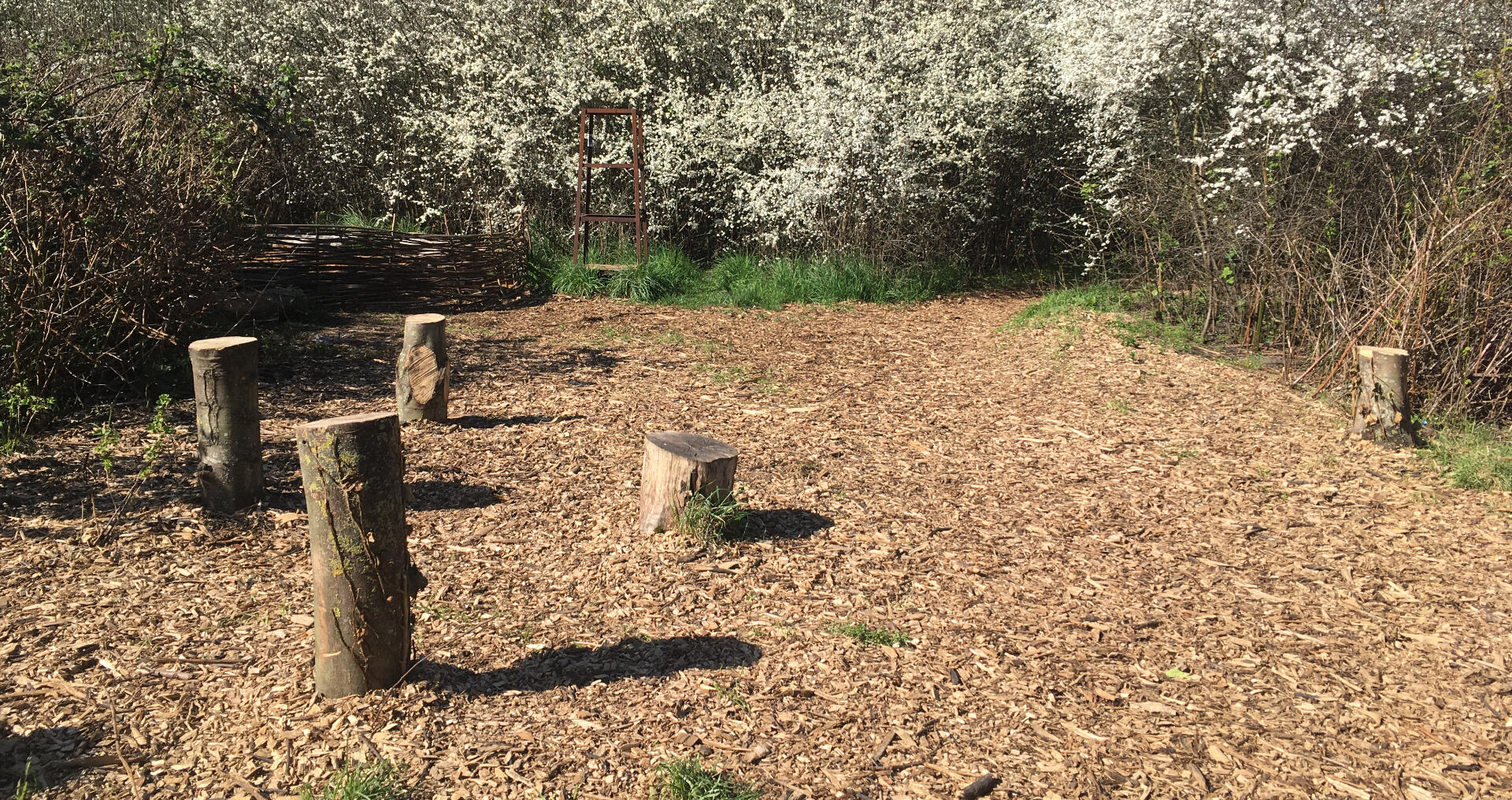
key finding: people are Gathered by the river
In a group Zoom discussion, FORCE trustees described the organisation’s origins as a pressure group. They had formed in 2003 with a shared desire to safeguard the River Crane’s green spaces from proposed building developments. It wasn’t a case of “Nimbyism”, Jane told me, but the land was “pristine” and they wanted to protect it.Several trustees shared their thoughts on why FORCE had continued as a prominent organisation in the area, indeed growing in reach and clout:
“FORCE represents different skillsets”: there was an appreciation for how the group drew strength from a range of different professional backgrounds and life experiences among the trustees.“We get along well”: the social nature of the group was a central factor and the Zoom discussion had the feeling of an amicable get-together. Even the name “Friends of the River Crane Environment” suggests that the group’s members are both friends of the river and friends with each other through the river.“FORCE continues to do useful things on the ground, and seeing change is fundamental. If you don’t see things change on the ground, what’s the point?”: being able to see the impact of work was important to FORCE trustees, but it may also contribute to why the group continues to receive support from local people who see change happening in the neighbourhood."We choose to stay volunteer-only... we shrink and grow according to need": Rob felt that it was an important part of FORCE's identity and a cause of longevity. "This is an unusual characteristic for a charity with our reach and impact... and it means that we are more inclined to embrace partnership working." FORCE focuses on creating lasting relationships rather than navigating financial requirements as an employer. This sort of model wouldn't work everywhere, and also relies on a healthy ecosystem of groups and organisations, as I develop further downstream...
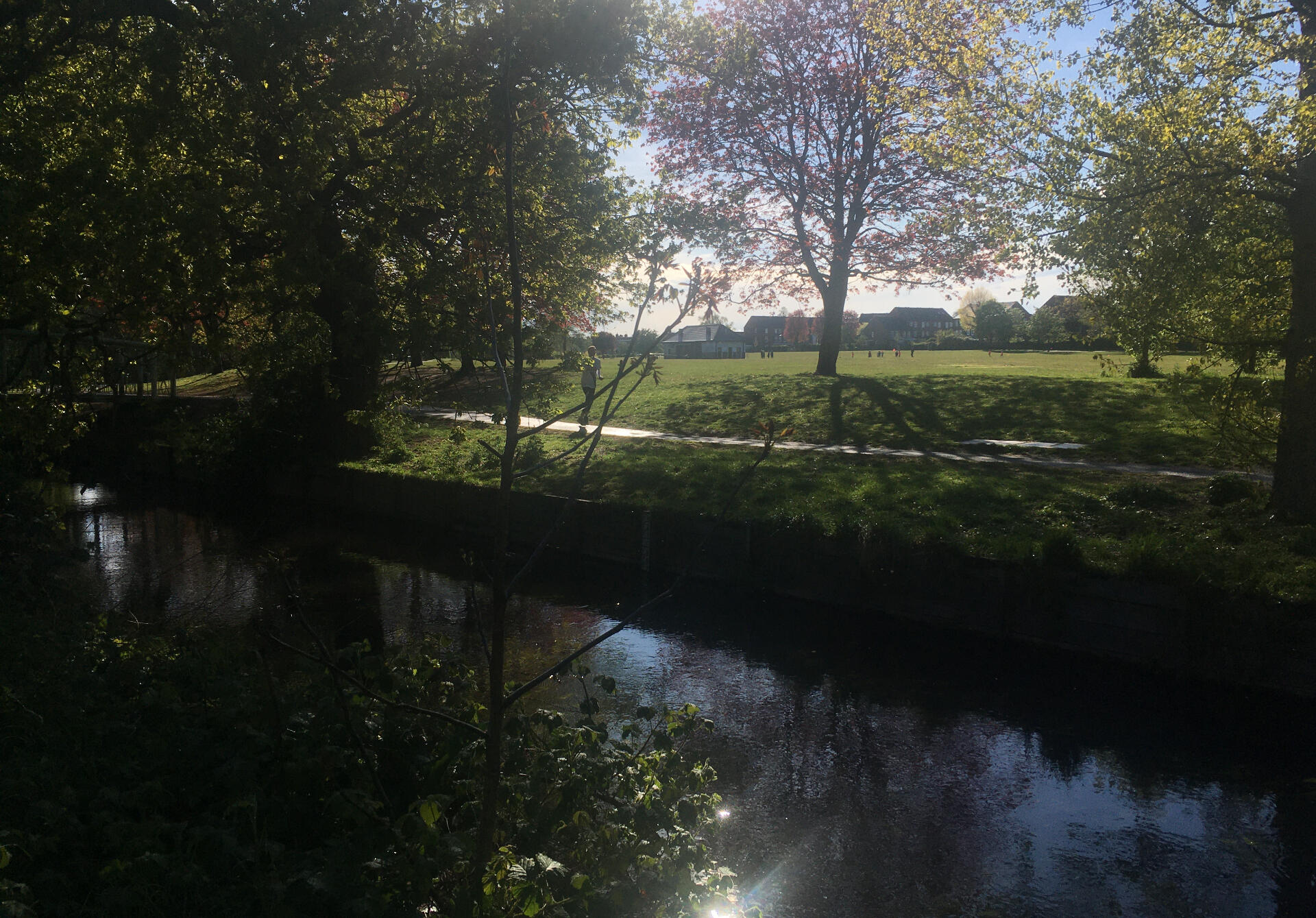
Trustees described how FORCE’s membership and volunteer pool had increased substantially since they started out, particularly in recent years. Alan said there seemed to be increasing public interest in conservation, and wondered whether this was partly because people had "more time on their hands" than previously.
Martin described the current appetite for volunteering at a local level as “a nice problem to have”. Larger numbers of volunteers require more organisation, but also make the trustees think about the increasing the scale of their ambitions. Martin was also clear that “volunteering days have to be inclusive”. This is echoed on FORCE’s website: “We are a community based organisation and work to involve local people in everything that we do”.Activating local desires to engage with conservation is key to FORCE. Their ability to grow and continue to bring about change appeared to be the result of relationships carefully nurtured over time, both with stakeholders from local government, agencies and corporations, and with members of the community who visit the River Crane corridor day to day.
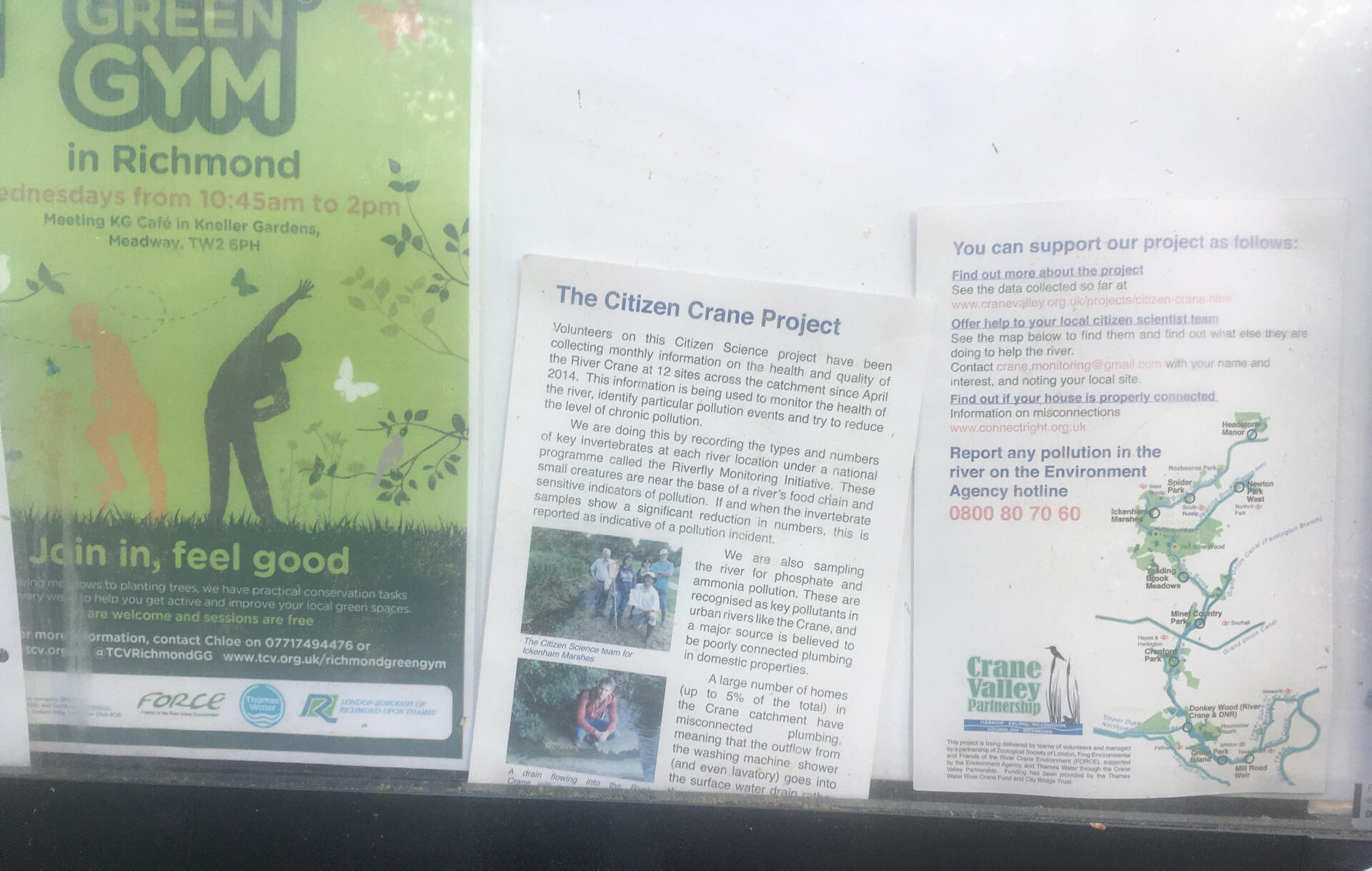
Citizen science and citizens of the catchmentVolunteers contribute to a data-informed understanding of the River, in the form of “Citizen Crane”. This is a citizen science project that monitors water quality along the catchment.As part of this ongoing work, around 60 volunteers have been trained to collect water which is analysed by scientists at partner organisations. Rob explained that it was thanks to volunteer monitoring work that the Crane Valley Partnership was awarded £3 million as part of a Smarter Water Catchment programme from Thames Water. Citizen science creates knowledge about the state of the waterway that would not otherwise exist, but it also engages people in the stewardship of their local area. Rob felt that this was important because it demonstrated people acting as citizens of a river catchment, suggesting that the river was capable of creating neighbourhoods.On a phone call in March, Rob spoke to me in a personal capacity. We reflected on whether people in London know what river catchment they are in. Then arose the questions: what could be the benefits of people knowing about their catchment, feeling a connection to the geography and ecology? What can organisations operating at the grassroots level, like FORCE, do to encourage a catchment-citizen mindset? A final question that Rob left me with in a recent correspondence:"Can a river system provide an environmental connection between disparate communities in an urban setting – becoming an environmental asset in common?"
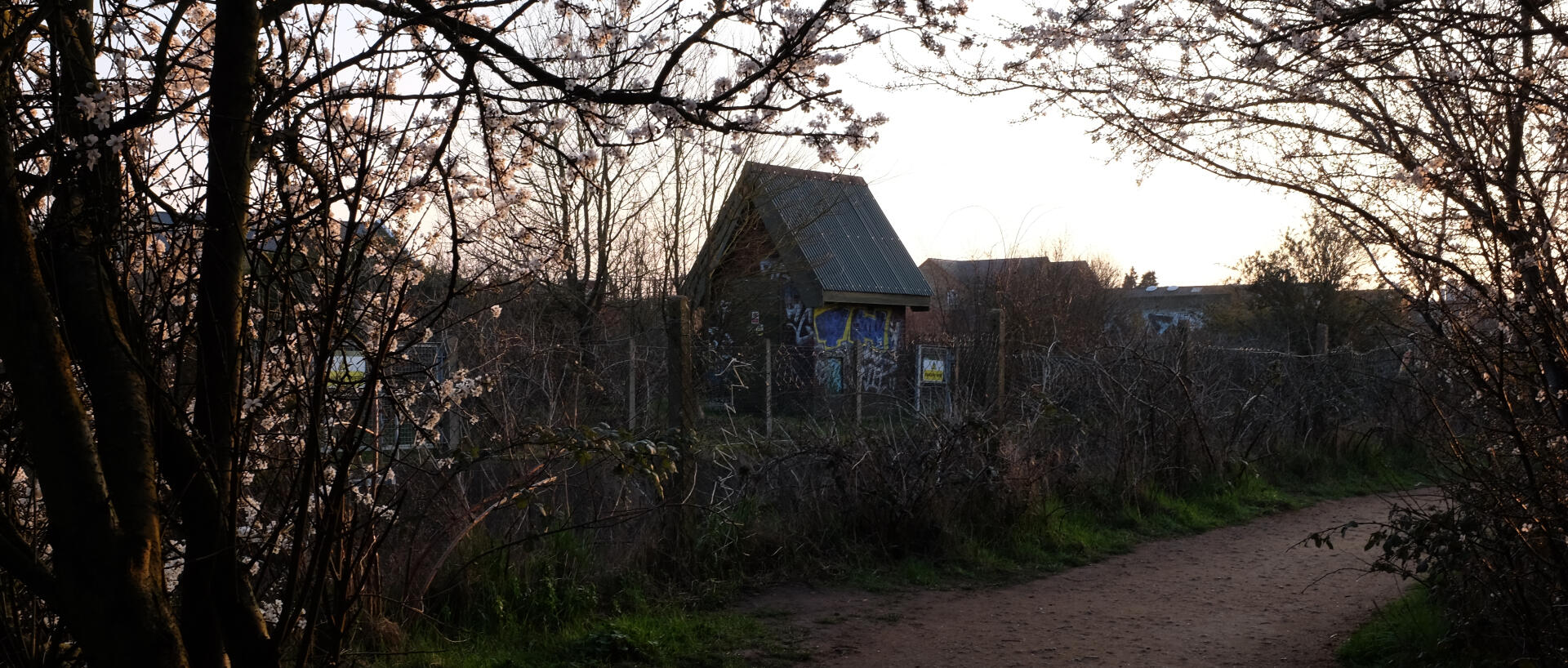
Social Ecosystems
I became interested in how people’s experiences of the Crane corridor on a day to day basis interconnected in ways that were not always perceptible at ground level. When people move through the landscapes of the Crane corridor they encounter the material fabric of a expansive ecosystem of social relations that traverses physical and digital spaces; whether or not people actively join a group or cause, whether or not they are engaged with local or national politics, they are walking on, hearing, smelling and seeing the results of complex sociality that stretched beyond what I could term a ‘neighbourhood’.I use the term ‘ecosystem’ as a conscious reference to the habitats and ecosystems supported by the River Crane. The social ecosystem is composed of social interactions and groupings of all sizes and scales, where each component is connected to, and dependent upon, various other components.I am also using this term because, influenced by Philippe Descola, I am interested in how we might be able to think about sociality through our relationship to our landscapes and non-human cohabitants of this planet in a way that breaks down the supposed distinction between "nature" and "culture".*I created the conceptual 'map' below after a phone conversation with Rob from FORCE, in order to help me understand, visually, the ecosystem that the River Crane brought to life.
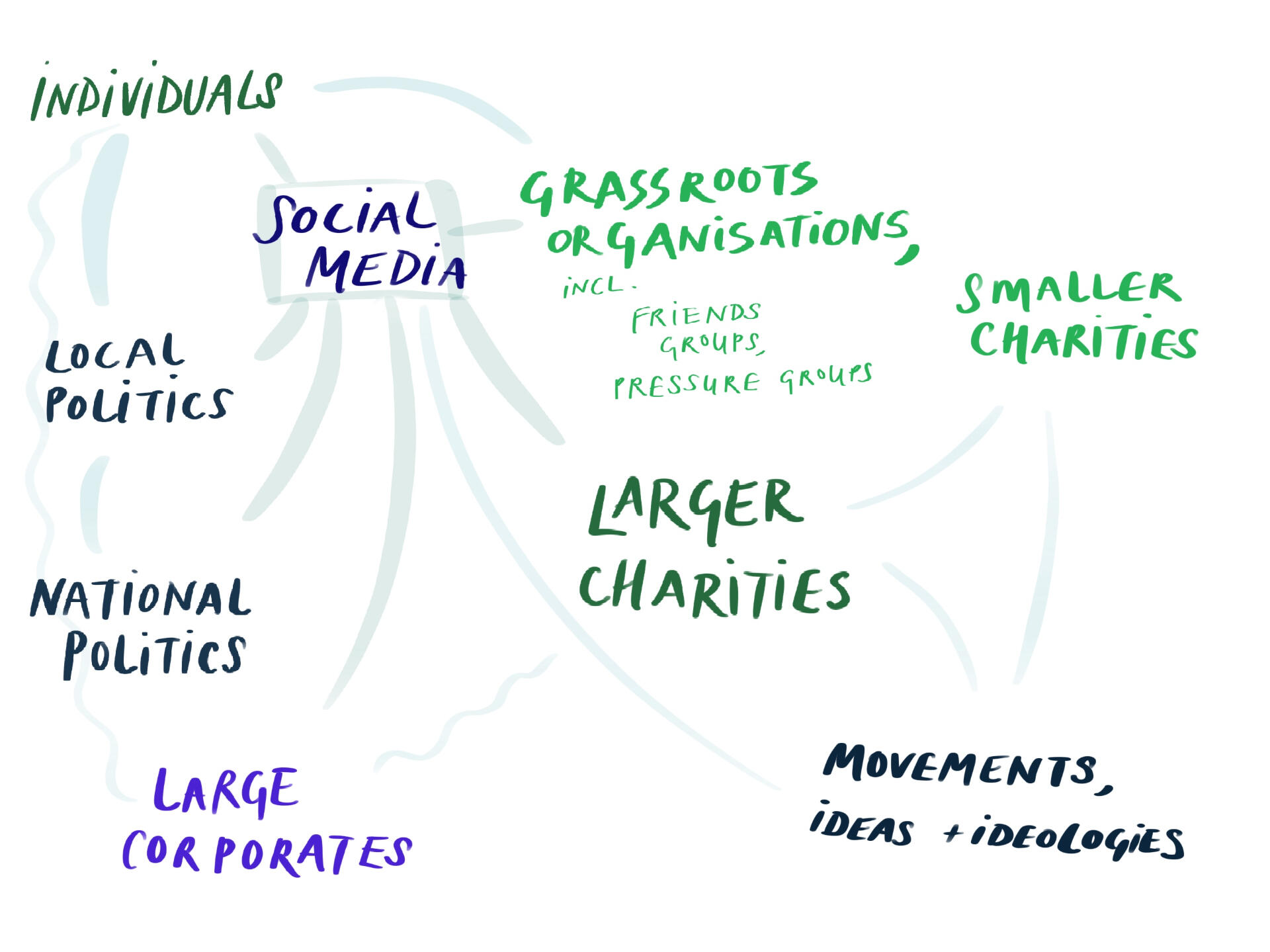
I found it hard to convey how I thought about the ecosystem in this form. For instance: how could I capture the way that social media sites are in more than just one place, making and breaking links between all of these elements? Social media sites foster engagement between individuals and other groups, 'horizontally' and 'vertically', and allow people to understand connections through tagging and hyperlinks.In the map below, I attempted to develop the idea, naming some (but not all!) of the organisations that I encountered during my research, and some of their linkages:
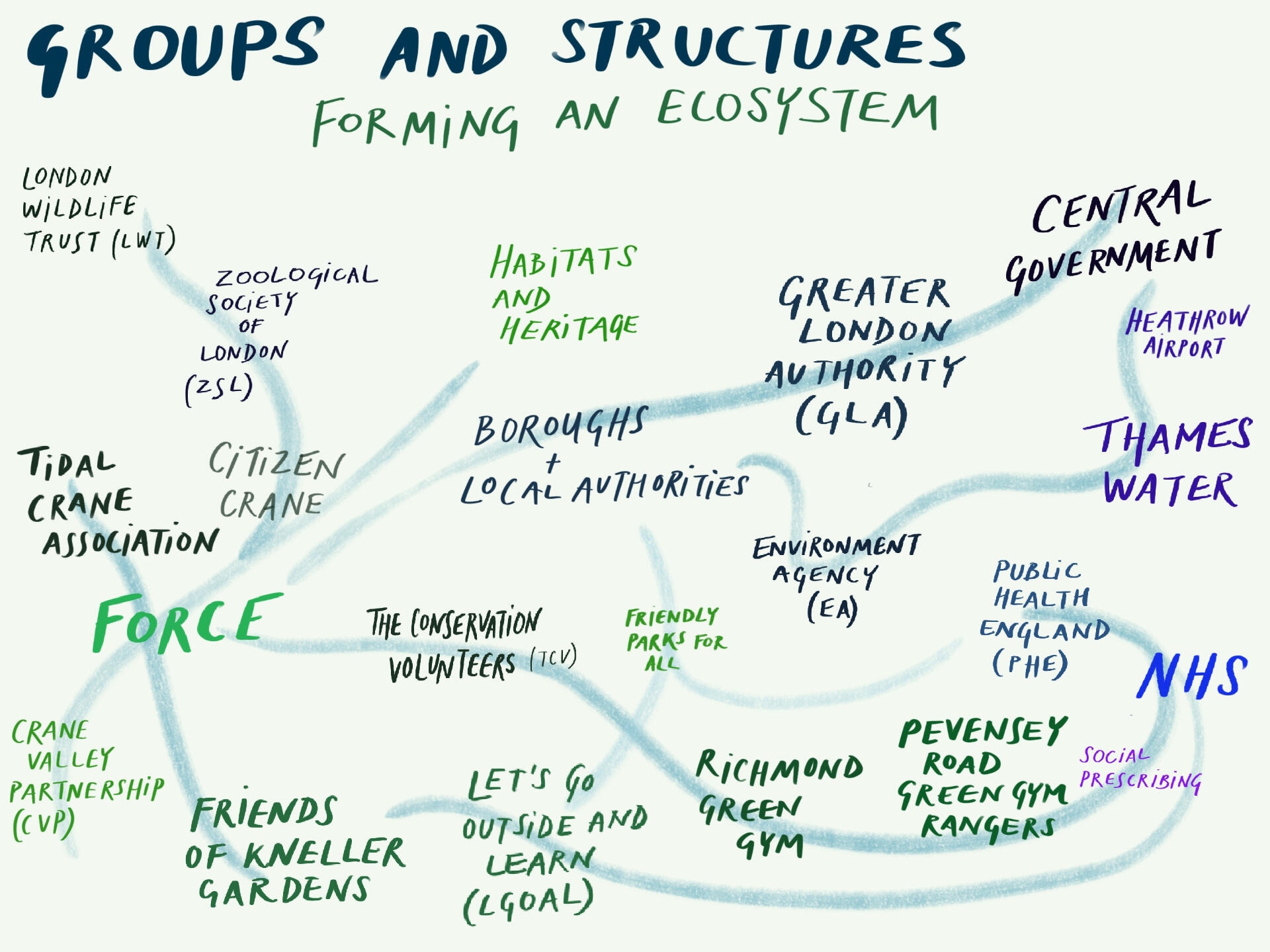
The connections that Rob and other FORCE trustees described to me, and the connections that I came across during my research are more complicated than I felt I could capture in flat graphics. There would always be information left off such a map, and it could grow exponentially in detail and scale.But at least the process encouraged me to think about the challenges and decisions that go into describing complex social networks, and where we might decide to draw a boundary around the concept of 'neighbourhood'.*
* "Things may also connect up on a much larger canvass, such as the political economy... For this bigger picture, we are committed to travel those wires and wireless connections and make them explicit in our studies." Horst & Miller 2012: 17- 18
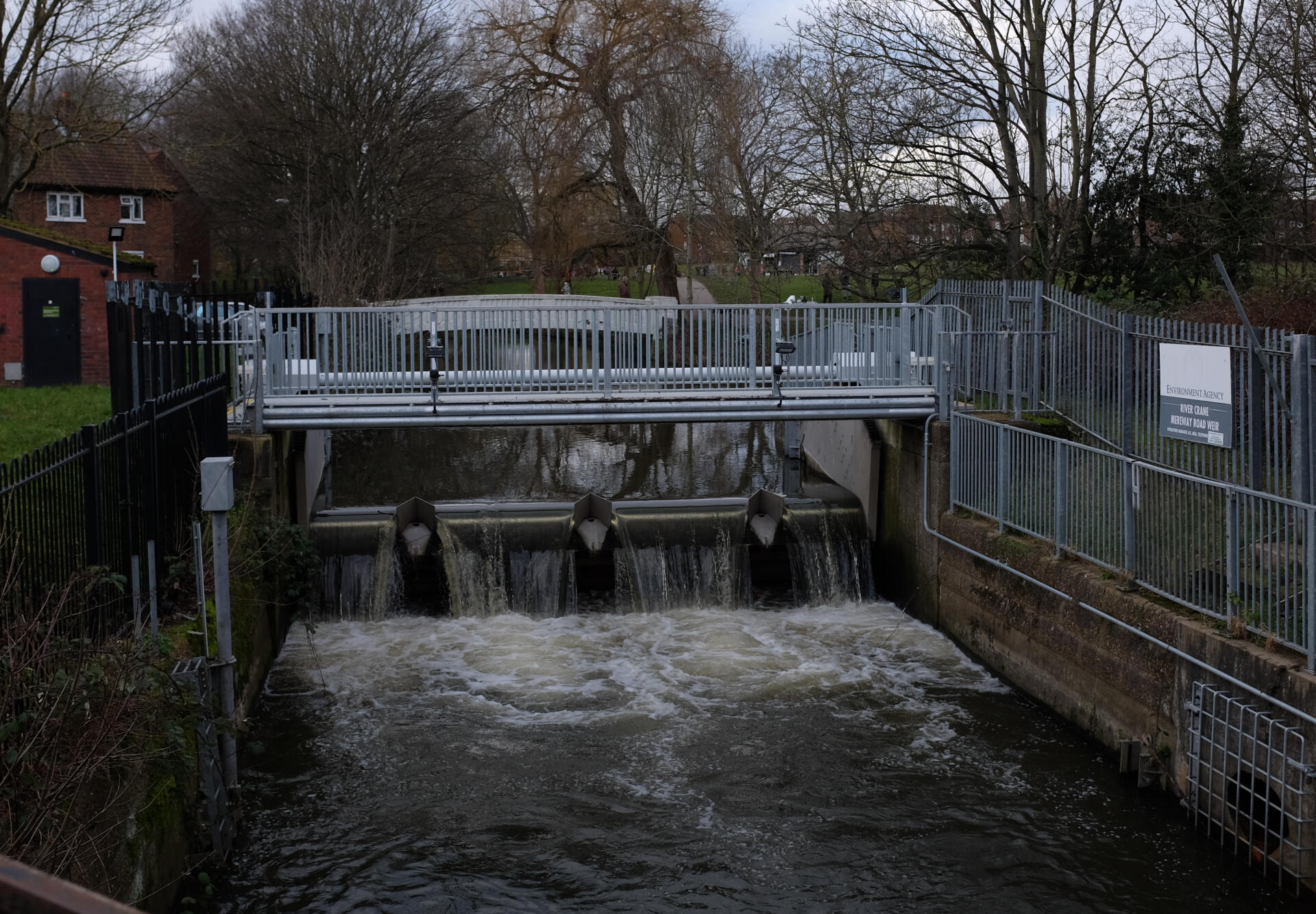
digital river, digital neighbourhoods
The River Crane is onlineConnections, ideas and information flow through the material infrastructure of the internet while the river moves through the physical landscape.FORCE's Facebook page was my starting point for researching online social activity around the river. The page became part of my online “neighbourhood”. I visited it frequently, along with other accounts that formed part of my project’s Facebook and Twitter feeds.In digital anthropology, the term “polymedia” is used to describe the way that social media usage cannot be understood by looking only at one platform or format: as digital anthropologists, we have to take a polymedia approach.* I found this applicable to my research, as it was through comparing the interactions around the River that occurred on Facebook, Twitter and Instagram that I gained a deeper sense of the kinds of sociality that each platform offers. I also noted differences in the ways that people related to the River Crane on each platform, and I felt that this was largely due to the affordances of each app.
Facebook Pages and Groups create the closest approximation of neighbourhoods, with a focus on specific geographical sites and concerns, and topics of conversation that are organised in the form of comments and replies cascading beneath original posts. FORCE's Facebook page is, a bit like Kneller Gardens in the physical landscape, a nodal point for online social activities among people interested in the Crane corridor. It is a place for hearing local news, participating in discussion, sharing in appreciation, and the 'phatic communion' acts of liking and commenting.Twitter was a better reflection of the metaphorical ecosystem of relations. Acts such as retweeting, mentioning and liking create visible connections and linkages, and also facilitate rapid jumps from individual to corporate to global scales.Instagram was different again. Here, aesthetic choices and individual expression were more important than the ability to sustain conversations. Content analysis of posts under location tags in my fieldsite reflected a wide range of activities engaged in. Some people seek to capture a happy, social moment, or bouts of exercise; others post photos which accentuate the pastoral, idyllic quality of the environment and diverse wildlife.Using social media platforms through my project's profile, I found various usernames of individuals and groups became familiar and places that I encountered on my walks appeared in photographs. I felt like I was getting to know my local area, my neighbourhood, digitally. I also became aware of conservation work taking place further away, that I would not have seen on my daily walks, but that nonetheless impacted the ecological health of the entire River Crane corridor.When meeting in person was not possible, FORCE continued to foster social connections and engagement with the landscape through numerous online events, such as talks on local history, a virtual birdwalk, and family activities. Jane noted during a focus group discussion that downloads of FORCE’s maps had increased significantly during lockdown, as people sought to make the most of outdoor areas in their own and nearby neighbourhoods.
The digital flows into the physicalBelow left and right: two photos showing the same Welcome to Kneller Gardens sign, several weeks apart.
The second image shows a new graffiti tag in pink paint pen, almost matching the pink #freebritney sticker that connects to a social media campaign. The Q-code sticker is also new. It links viewers, via their smartphone camera and browser, to the Richmond Council website.
I've included these images because they made me think about how we talk about 'the physical' and 'the digital' as if they are distinct; in fact there is a flow between them, the digital is with us in the physical after all, as both the hashtag and Q-code above demonstrate. These technologies of digital gathering and linking invite us to be carried away into online flows of information, while simultaneously remain physically situated beside the River Crane.
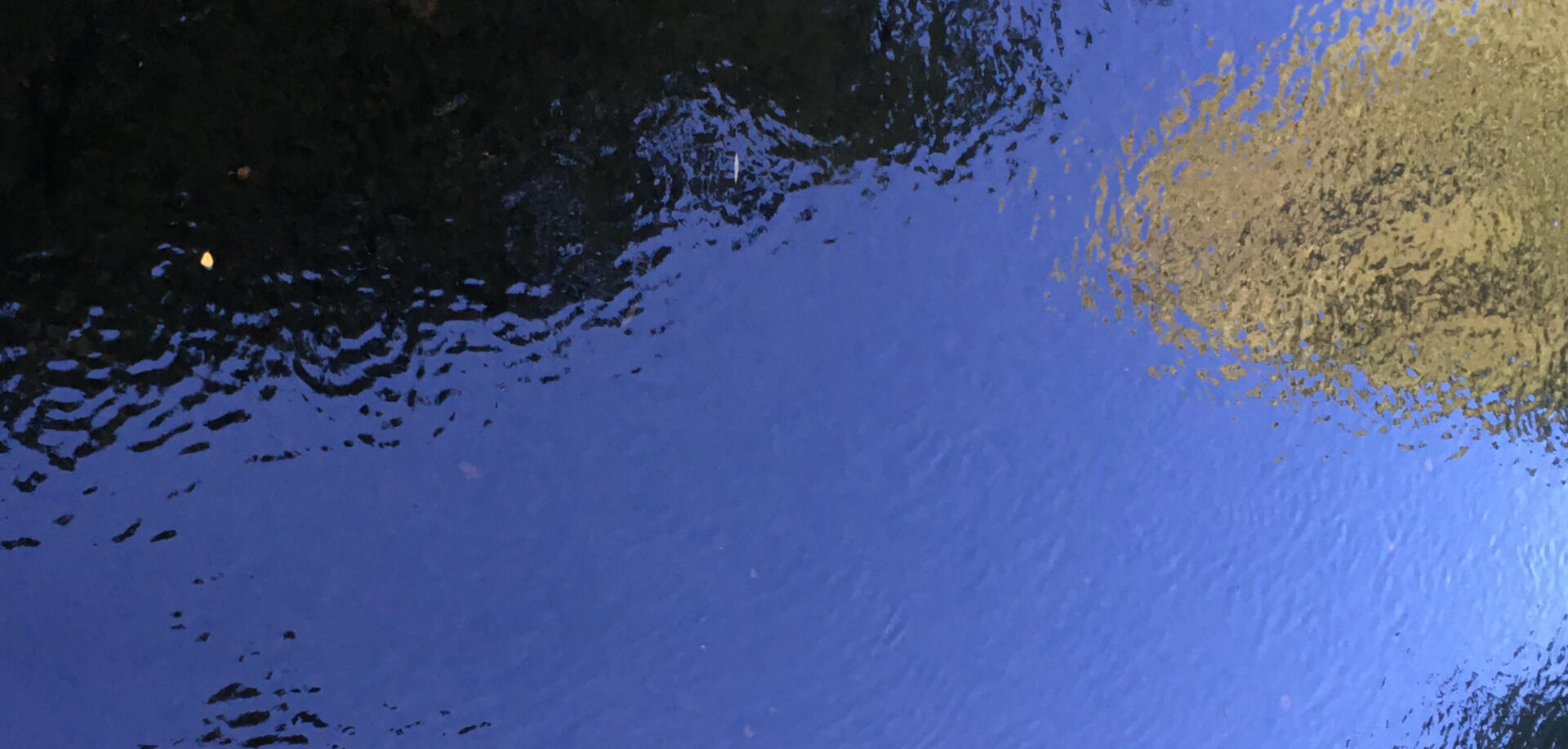
reflections on neighbourhood anthropology
What did I learn from doing digital anthropology in my own neighbourhood?Influenced by the work of Chris Tilley*, I tried to take a phenomenological approach to learning about the physical landscapes of my neighbourhood, and also tried to work out to what extent I could take a phenomenological approach to and with online and digital media.Through this project, I gained a better understanding of how numerous social groups and neighbourhoods interact and how these connections are visible or invisible in the physical environment.
Using digital technologies, I experimented with ways of documenting my journeys through the physical space.The map below, that I drew by tracing Google's map as my base, contains buttons that reveal images, text and some audio recordings.
I paid more attention to the details of what I was sensing around me, and I became more curious about how other people experienced these spaces. I noticed more about how I was engaging with social media, too.
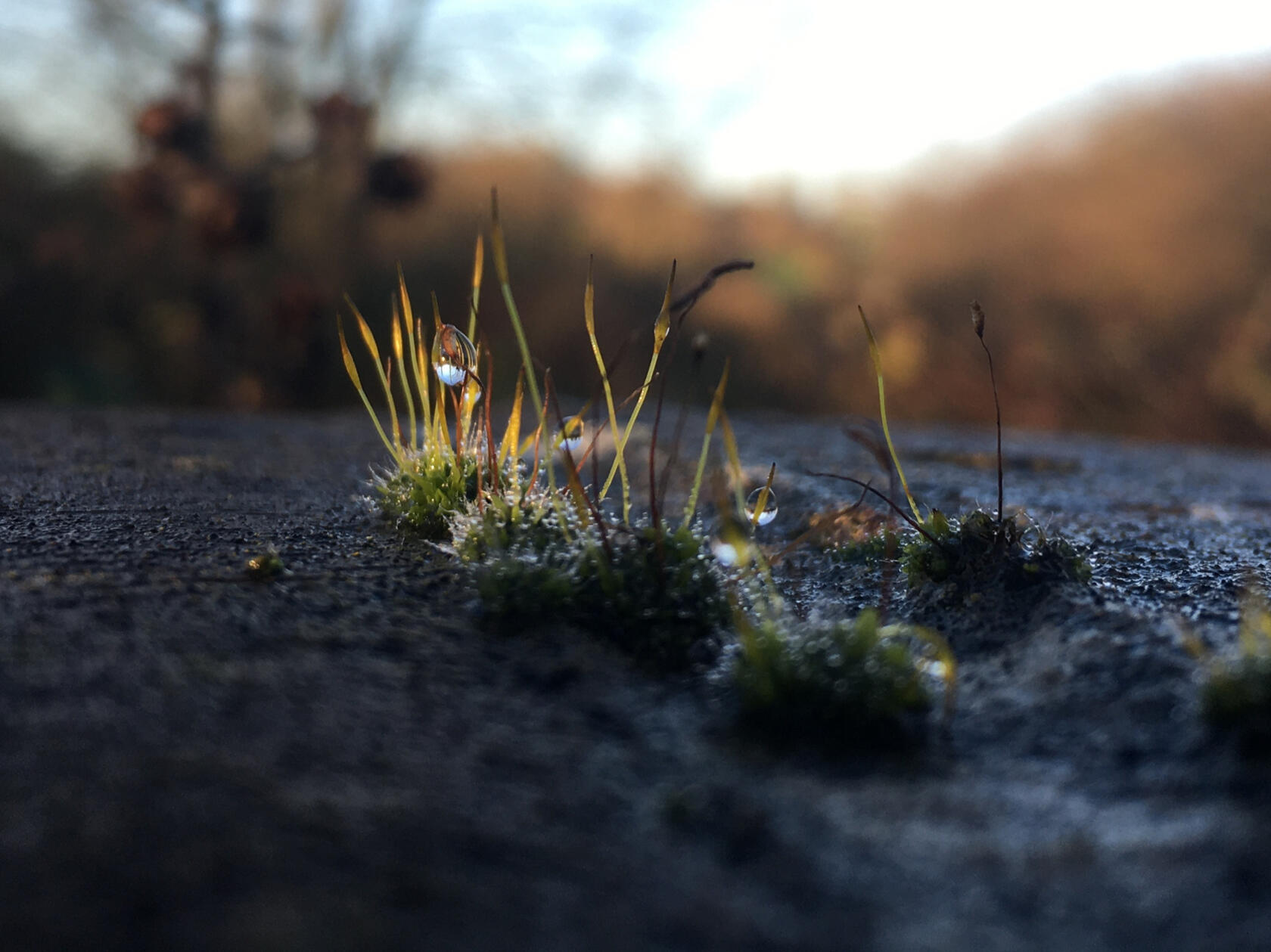
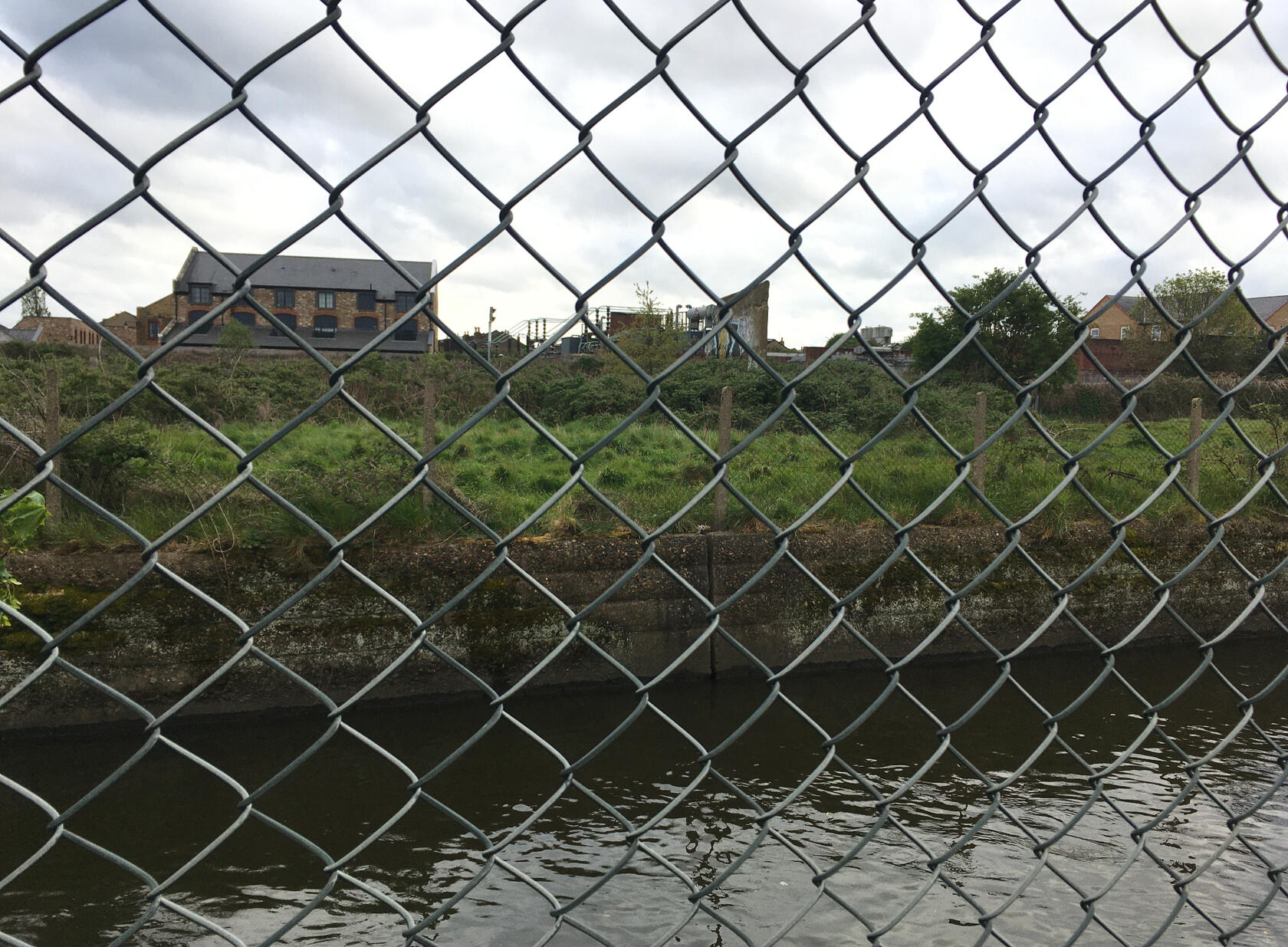
I realised that scrolling this project's Twitter feed during my online 'walks' left me feeling more uplifted and relaxed than when I scrolled my personal Twitter: on this project's Twitter account, I found multiple examples of grassroots action for conservation, inspiring stories of people giving their time and energy to care for their neighbourhoods. And of course, photos and videos of the beauty around us.I was aware that I had curated a focused and limited feed for the purposes of the project, which could be considered something like an echo-chamber, but the by-product was a pleasant online 'neighbourhood'.
Choice of platformI chose to build my website using carrd.co for two reasons: practically, I found the site construction interface the simplest and most intuitive of those I trialled. Aesthetically, I wanted the site to have a sense of flow, conveying how my research carried me between different topics, conversations and ‘places’, online and offline.
Bibliography
Descola, Philippe, 2013, “Configurations of Continuity” in Beyond nature and Culture, Chicago: University of Chicago Press
Horst, Heather A., and Miller, Daniel, (eds.), 2012, Digital Anthropology, London: Taylor & Francis Group
Malinowski, Bronislaw, 1923, "Supplement 1: the problem of meaning in primitive languages," in: Ogden, C, and Richards, I (eds.), The Meaning of Meaning, London: Routledge & Keegan Paul
Miller, Daniel, Elisabetta Costa, Nell Haynes, Tom McDonald, Razvan Nicolescu, Jolynna Sinanan, Juliano Spyer, Shriram Venkatraman, Xinyuan Wang, 2016, How the World Changed Social Media, London: UCL Press
Tilley, Christopher, 1994, A phenomenology of landscape: places, paths, and monuments, Oxford: Berg
Tilley, Christopher (ed.), 2019, London's Urban Landscape: Another Way of Telling, London: UCL Press:
